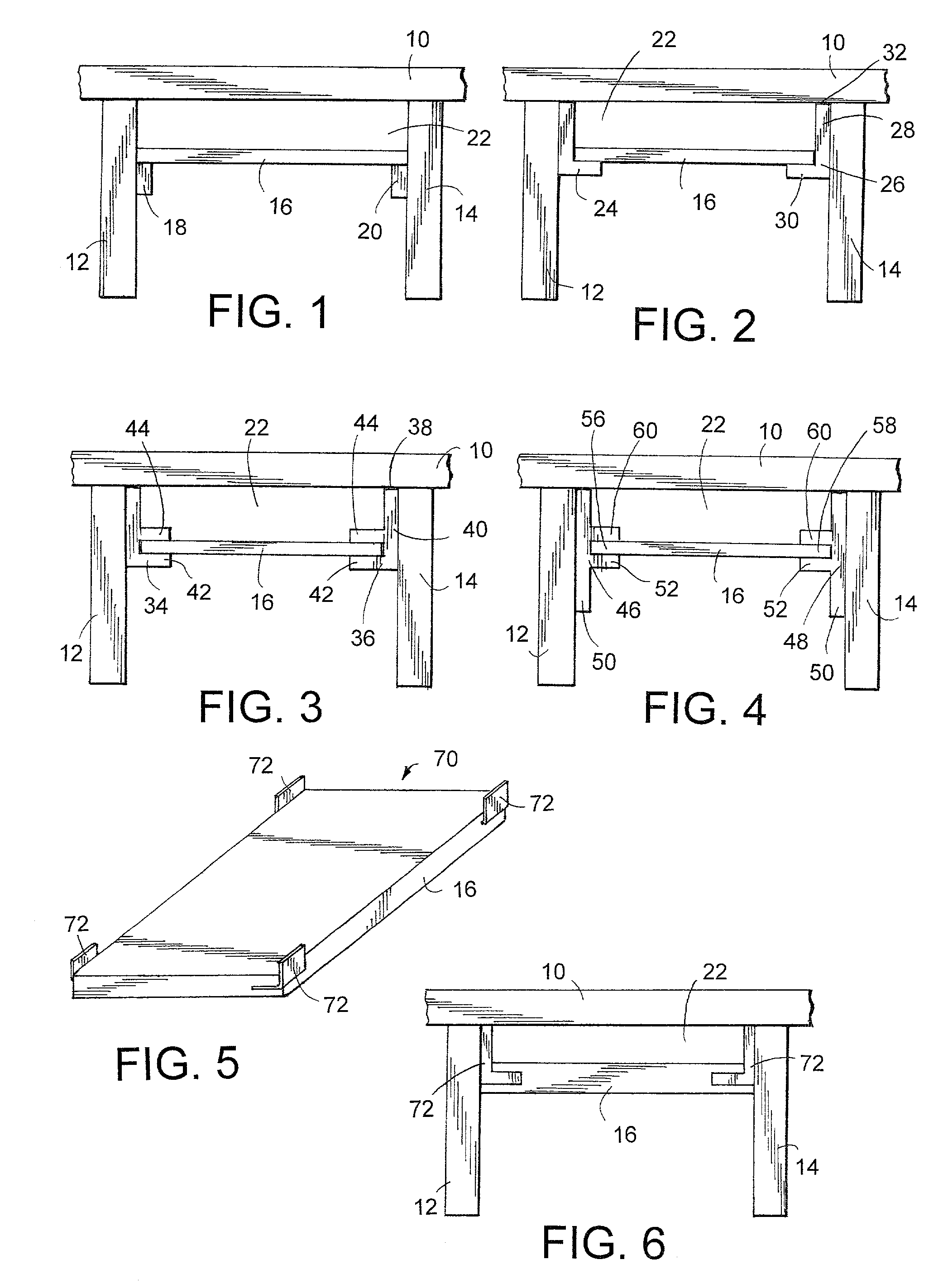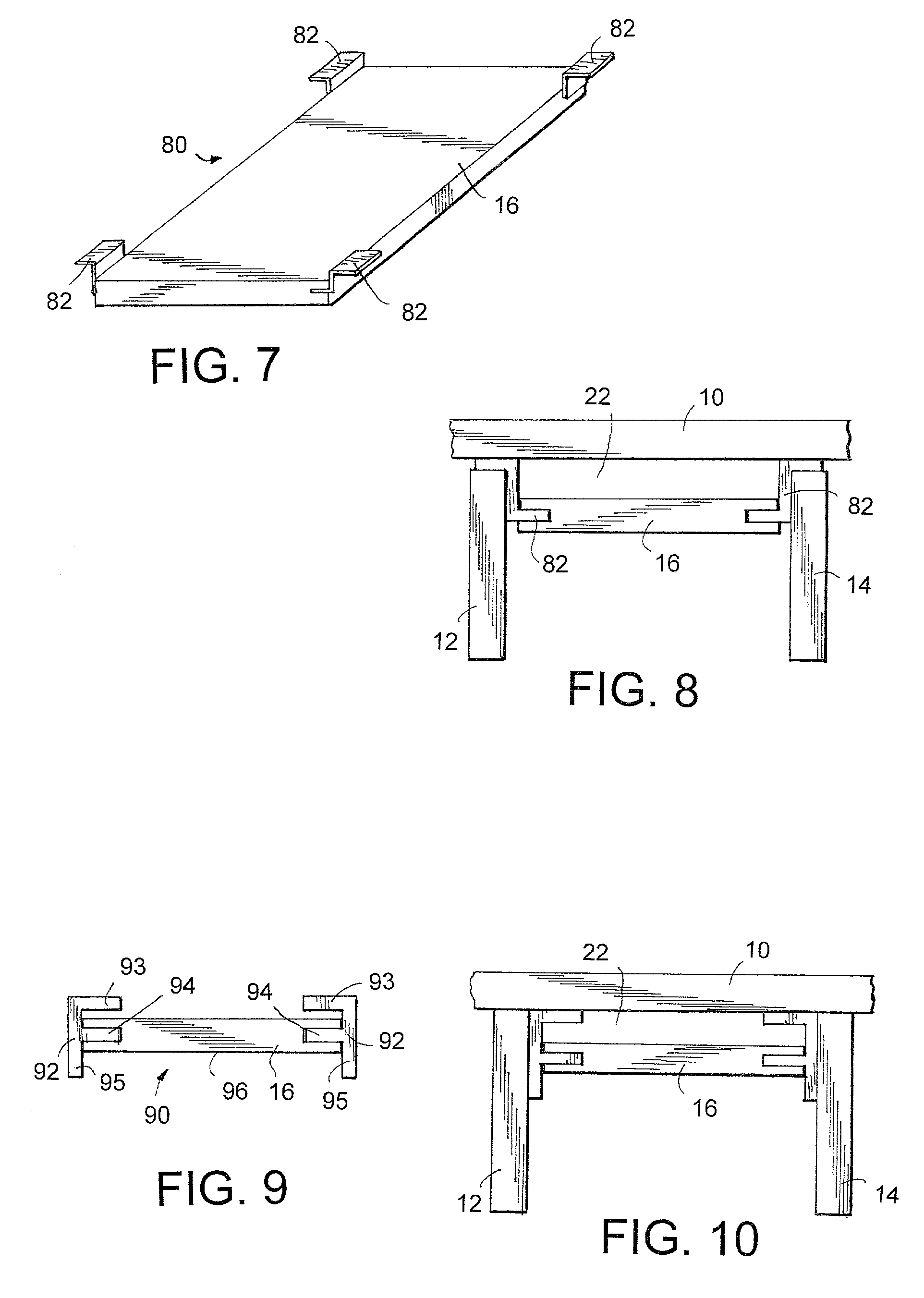Process and apparatus for insulating building roof
- Summary
- Abstract
- Description
- Claims
- Application Information
AI Technical Summary
Benefits of technology
Problems solved by technology
Method used
Image
Examples
Embodiment Construction
[0023]In FIG. 1, there is shown a building roof 10 supported on rafters 12 and 14. The roof is thermally insulated by supporting a rigid insulation panel 16 below roof 10 and between rafters 12 and 14. An insulation panel 16 can be supported on brackets 18 and 20 fastened to rafters 12 and 14 respectively. Brackets 18 and 20 may be in the form of rails that extend the length of rafters 12 and 14, or brackets 18 and 20 may be relatively short (e.g., one to three inches), with one bracket supporting each of the four corners of a panel 16. Although the process used for insulating a building roof in accordance with the structure shown in FIG. 1 has advantages over the use of alternative methods utilizing glass fiber batt, a disadvantage is that care must be taken to install brackets 18 and 20 on rafters 12 and 14, respectively, at a desired distance from the underside of roof 10 so that insulation panel 16 is spaced from roof 10 to provide an appropriate ventilation gap 22, wherein the ...
PUM
 Login to View More
Login to View More Abstract
Description
Claims
Application Information
 Login to View More
Login to View More - R&D
- Intellectual Property
- Life Sciences
- Materials
- Tech Scout
- Unparalleled Data Quality
- Higher Quality Content
- 60% Fewer Hallucinations
Browse by: Latest US Patents, China's latest patents, Technical Efficacy Thesaurus, Application Domain, Technology Topic, Popular Technical Reports.
© 2025 PatSnap. All rights reserved.Legal|Privacy policy|Modern Slavery Act Transparency Statement|Sitemap|About US| Contact US: help@patsnap.com



